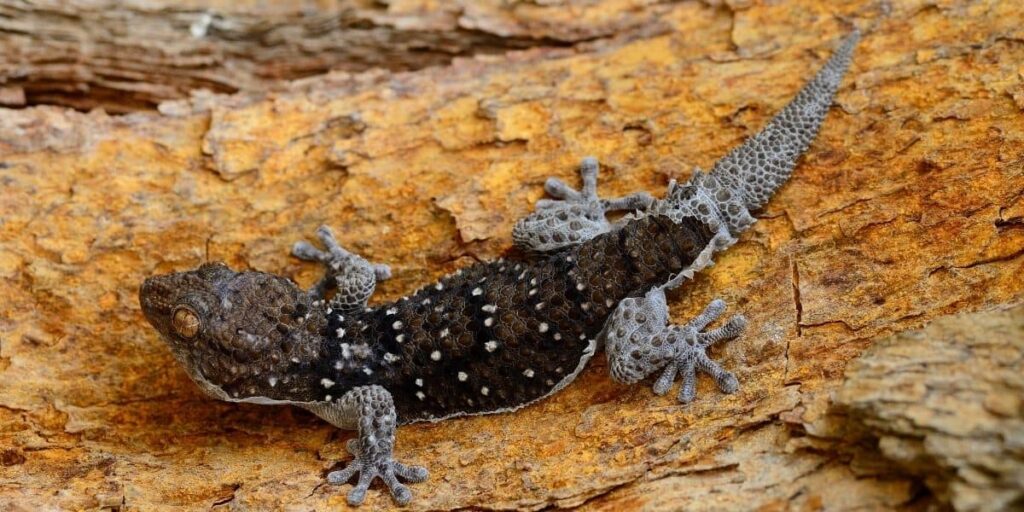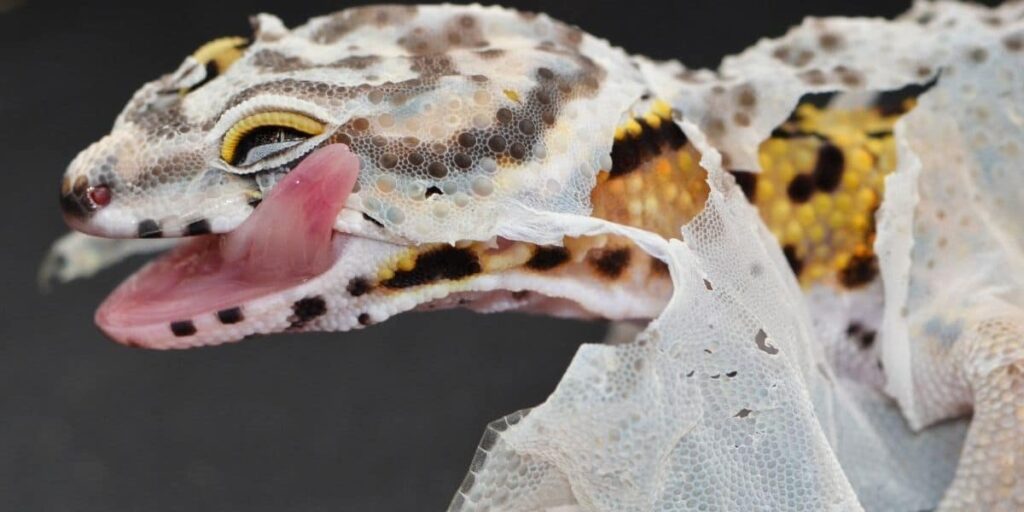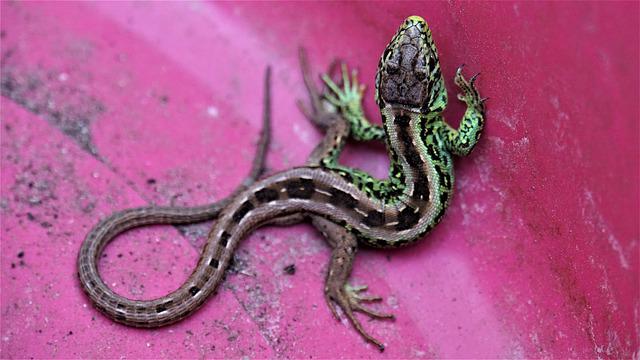Geckos are reptiles and one of the most defining features of many reptiles is the ability to shed their skin. But this can seem like a bit of a weird process to humans whose skin doesn’t shed as a whole but rather in tiny particles.
But one of the most common questions for new gecko owners is whether or not these particular reptiles shed; so, do geckos shed their skin? Let’s find out.
There are many types of gecko that can be kept as a pet but for the purposes of this article, we will be focusing on the leopard gecko, which is one of the most common. All reptiles shed their skin and so, when you adopt a leopard gecko, you can expect him or her to shed as they grow.
If you are new to leopard gecko care, you may feel a little daunted by the prospect of caring for your pet as they undergo this transformation. However, just know that this is entirely natural and, for the most part, won’t cause any problems for the animal.
A Bit About Leopard Gecko Shedding
There are various types of lizards, some geckos included, who shed their skin in large chunks over the course of several days. But the leopard gecko sheds its skin in a very unique and wonderful way. This process can be fascinating for owners to observe, especially if you are new to keeping this type of animal.
Instead of shedding bit by bit, leopard geckos will shed their skin as one whole piece, in a similar way to how snakes complete this process.
You might think of this as a human children when they outgrow their clothes, they must be discarded and new ones come in to replace them. In leopard geckos, this skin suit comes away as the animal grows and will be replaced with a skin that fits more comfortably.

Once you have seen your leopard gecko shed or if you have taken care of these animals for many years, the concept of skin shedding may become a little mundane. But that is certainly not to say that you shouldn’t pay attention to the process.
For the most part, leopard geckos will shed their skin without any assistance from their owners and the process won’t cause them any pain, discomfort, or distress.
That being said, there are always exceptions to this rule and it is essential that you keep an eye out for anything that might go wrong.
How Do I Know When My Gecko Is Shedding?
It can be tricky to tell when a leopard gecko is going to shed his skin. How easy it is to spot will depend on the leopard geckos’ natural coloring. For example, if the animal has a much lighter skin tone, or is albino, the onset of skin shedding would be much more difficult to spot than in a darker, wild gecko.
But it is still worth looking out for signs, even in those with lighter skin. One of the key giveaways is that the leopard gecko takes on a greyish/white appearance, this is one of the last signs and is due to the skin coming away from the fresh layer underneath.
But even before this, you may notice that the animal begins to change color and this could be anywhere from very subtle to blindingly obvious.
How Often Will My Leopard Gecko Shed?
It might surprise you to learn that leopard geckos could shed their skin as frequently as once or twice a week if it is having a particularly vigorous growth spurt. But generally, once the leopard gecko reaches maturity and growth slows down, it will only shed around once a month.
There is no particular time of year that a leopard gecko will shed its skin and this can vary dramatically from animal to animal. However, you would not normally expect shedding to occur at the same time as brumation.
Will My Leopard Gecko’s Behaviour Change When Shedding?
If you ever notice a change in your pet’s behavior, this can be worrying but it could be related to shedding. As the old skin comes away, your gecko will need much more moisture than usual to help with the process. For this reason, you may notice that he or she spends a lot more time in the moisture hide.
It is also not uncommon for leopard geckos to go of their food while they shed, although it is unlikely that they will stop eating altogether so food should still always be offered.
As the time draws ever closer for the gecko to shed its entire skin, you may notice some odd behaviors as he tries to boost the process. For the most part, it is typically the skin nearer the head that will come away first.

In order to help this along, geckos might rub themselves against rocks and other items in the enclosure to remove the skin.
Once this is done, you will probably notice your pet twisting itself in order to reach its tail end with the mouth so that excess skin can be pulled away.
Unless you notice that the leopard gecko is really struggling, you should allow your pet to go through the process naturally.
How To Care For A Leopard Gecko When It Is Shedding
We have stressed that shedding is a natural process that the gecko will likely get itself through. However, that doesn’t mean that you shouldn’t take good care of your pet while it is shedding. One of the biggest mistakes that a lot of owners make when experiencing shedding for the first time is handling their pet.
While shedding, your usually friendly gecko may turn a little grumpy so it is best to leave them be during this time.
If you attempt to handle the gecko and this causes it to stress, there is a risk that the shedding skin can get stuck. This can also be caused by a lack of moisture or a vitamin deficiency.
However, there are some geckos who naturally find shedding more difficult. To help your pet, if they experience problems, you can give your pet a soak in warm water. If the affected area is around the eyes it is better to apply a warm, damp cloth.
Furthermore, you should always make sure to continue offering food during the shedding. It is likely that your gecko’s appetite will seriously dwindle while shedding takes place but you should still make sure that they have the option to eat.
Conclusion
All geckos shed their skin as they outgrow it, however, leopard geckos do this in a very unique way which is more like how a snake sheds than a typical lizard. This is a completely natural process and your pet will likely go through it unaided. However, there may be times when he or she struggles.
Providing the best possible care for your pet can help to ensure that each shed is as quick and easy as possible.




